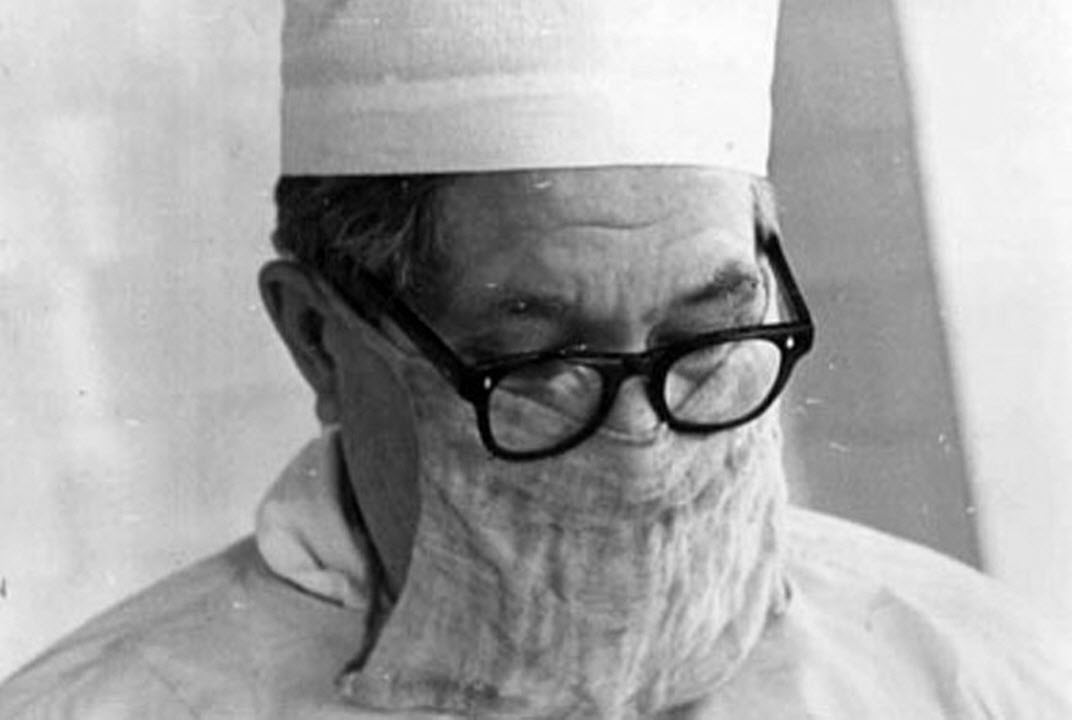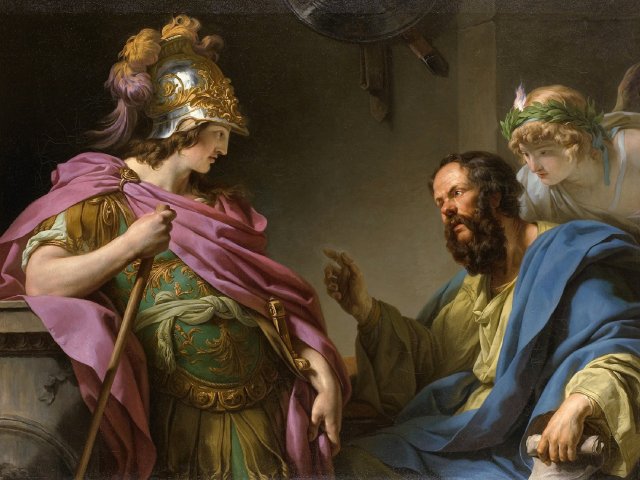War is a cruel time that turns people’s habitual ideas about life upside down, changes the daily routine, and carries out a change of priorities and values. It does not matter what kind of war we are talking about: the War of 1812, WWI, or WWII. During any war, people’s lives change beyond recognition. Someone masters a new profession to somehow adapt to reality, someone finds their place, being who they were before the war, someone is just trying to survive. In our article, we talk about the life and work of outstanding scientists, which opens the thematic week for the Defender of the Fatherland Day.
A hint from the peaceful life
During war, the most useful discoveries are those that save lives, rather than cause damage. Of course, medical scientists are coming to the fore. For example, the soldiers of the Crimean War of 1853-1856 owed their lives to Nikolay Ivanovich Pirogov, who was at the epicenter of what was happening – the besieged Sevastopol. Of course, the surgeon did not work alone. In Saint Petersburg, he headed the Department of Surgery at the Medical and Surgical Academy, from where he and his colleagues went to the frontline at the beginning of the war to help the wounded.
During his work, Pirogov developed several new techniques that helped to avoid full amputation. One of them was called the “Pirogov amputation.” He also used ether anesthesia, introduced disinfection, and invented the plaster cast. At first, he tried to fix the damaged limbs with the help of a starched cloth, but unsuccessfully. Despite the military situation, the idea to use plaster came to the surgeon from his peaceful life. Once while in Crimea, he went into the studio of the sculptor Nikolay Stepanov at the very moment when he was working with plaster. The strength of the material proved itself not only in the creative environment but in hospital walls.
Interestingly, during the war, N. I. Pirogov had a chance to examine D. I. Mendeleev, who worked as a senior teacher at the Simferopol gymnasium. It was thought that he had consumption, but Pirogov prophetically declared that Mendeleev would outlive both him and his friend who organized this meeting. And so, it happened.
The painting “N.I. Pirogov at the Main Dressing Station in the Hall of the Nobility Assembly” Artist M.P. Trufanov. From the collection of the Military Medical Museum
A case in Persia
Nikolay Ivanovich Vavilov did not take part in WWI, as he had a visual defect due to a childhood injury. However, in 1916, he saved many soldiers by solving the cause of the mass pestilence in Persia. The scientist found out that soldiers die from Persian flour. During manufacture, particles of poison darnel (Lolium temulentum) would fall into it, followed by Stromatinia temulenta fungus, which produced the alkaloid temulin. The latter caused severe poisoning in people, which often led to death. After solving this riddle, the soldiers stopped eating local food, and food began to be delivered to them from Russia. So, without holding a weapon in his hands and without stepping on the battlefield, the Russian scientist saved many lives.
Nikolay Ivanovich Vavilov at work
Imitating death
During the war many doctors saved soldiers’ lives by simulating their death. For example, Fyodor Mikhailovich Mikhailov, a former sailor, was retrained as a military doctor at the beginning of WWII. In October 1941, he fell into an enemy trap near Poltava. There was nowhere to go, and he had to settle in the city of Slavuta. As the head physician of a local hospital controlled by the Germans, he secretly rescued Russian soldiers. Prisoners of war were kept in terrible unsanitary conditions. Under the pretext of infectious disease, he transferred them to a special barrack, which the Germans did not dare to enter. Over time, when the patient recovered, they were recorded as deceased and taken outside the hospital. Fyodor Mikhailov did not live to see the end of the war: the Germans shot him on charges of underground activities.
Georgy Fedorovich Sinyakov, who after being captured worked in a German infirmary, was engaged in similar activities. He saved the enemy’s son, and they began to trust him. Thanks to this trust and additional rations, the doctor nursed and saved many Russian prisoners of war. He developed a special ointment that treated wounds, but at the same time, they remained fresh on the outside. Thus, the doctor assured the enemies that the soldier could not be helped. The prisoners pretended to be dead (this was also taught to them by Georgy Fedorovich), after which they were thrown into the moat outside the camp. The soldiers could escape from there.
Georgy Fedorovich Sinyakov
Typhoid deception
Polish doctors Eugene Lazowski and Stanisław Matulewicz also played imitation games. During the Holocaust, they rescued Jews around Rozvadov (about 8000 people). They learned that if a person is vaccinated with dead Proteus OX19 bacteria, then a blood test will show positive for typhus. At the same time, the patients remained unharmed. The doctors vaccinated many Jews in neighboring villages, after which the entire area was declared an epidemic zone. The Nazis left these places in a hurry and left the residents alone.
Priceless plants
The famine that the inhabitants of Leningrad had to endure during WWII was a terrifying event and a heroic feat of the nation. Even though people were dying from lack of food, the most valuable samples of the N. I. Vavilov All-Union Institute of Plant Growing (VIR) remained untouched. The employees were dying of hunger, but they did not use either grain seeds or potato tubers for food. Scientists understood that this would lead to total famine after the war. The workers maintained the right temperature, protected the seed jars from thieves and rats. Only heat-loving plants did not survive the blockade: banana, figs, and cinnamon. The main fund was saved.
Collection of seeds of the N. I. Vavilov All-Union Institute of Plant Growing (VIR)
“Recipes” of besieged Leningrad
Many scientists of the besieged Leningrad understood that poor nutrition, and later its complete absence, could lead to an epidemic of scurvy, and with it to nervous disorders and infectious diseases. A great contribution to the development of vitamin recipes for besieged Leningrad was made by Alexey Dmitrievich Bezzubov, who at that time worked as the head of the Chemical and Technological Department of the All-Union Research Institute of the Vitamin Industry and a consultant to the sanitary department of the Leningrad Front. In the memoirs of the scientist, you can read about “vitamin cocktails,” which were made at that time from what could be found in the deserted city.
Vitamin C was extracted from the needles by treating the crushed needles with a 0.5% solution of acetic, citric, or tartaric acid (they were in excess in confectionery factories). The tincture was filtered and poured into containers. The greenish-colored drink tasted sour but very tolerable (from A. D. Bezzubov’s memoirs).
Making a vitamin drink from pine needles
Soups made from sprouted peas, which contained vitamin C and ascorbic acid, were also popular. To save Leningraders from alimentary dystrophy (people lacked protein), scientists came up with the idea of making yeast from sawdust.
The wood was crushed and subjected to acid hydrolysis (mixed in an aqueous solution of sulfuric acid, which was taken from the stocks of chemical plants). The acid was then neutralized with lime. The calcium sulfate precipitate and other impurities were removed, and a glucose solution was obtained. Yeast seed from the Hydrolysis Institute was added (from A. D. Bezzubov’s memoirs).
Such yeast contained vitamins B1, B2, PP, and protein. They were actively used in hospitals.
Fighting cholera
In 1942 Zinaida Vissarionovna Ermolyeva obtained Soviet penicillin, an antibiotic that saved many soldiers from blood poisoning after being wounded. She was sent to besieged Stalingrad to prevent a cholera epidemic, which she studied for a long time and even conducted a life-threatening experiment. In Stalingrad, the threat of an epidemic was the German army, which could transmit the infection along the evacuation routes. To prevent the epidemic, Zinaida Vissarionovna was sent to the city. She worked as part of a group of other scientists involved in anti-cholera measures. Prevention was carried out with a cholera bacteriophage obtained in the laboratory of Z. V. Ermolyeva earlier and tested in 1941 during outbreaks on the border with Afghanistan. About 50,000 people per day took the drug. She also developed an accelerated method of bacteriological diagnosis of cholera, which allowed to get the result in 5-6 hours, as well as a method of group testing, which significantly increased the throughput of laboratories.
Soviet penicillin
Protected by own discoveries
At the beginning of WWII, Lina Solomonovna Stern proposed a method of treating traumatic shock by injecting potassium phosphate into the cisterna magna. This method was officially recognized by the scientific community, and Soviet surgeons actively used it in field surgery. Stern organized anti-shock brigades and traveled with them to the Western Front. After the war in 1945, the scientist succeeded in treating children from tuberculous meningitis (previously considered incurable) through suboccipital administration of streptomycin. Once she was threatened with execution, but science saved her. In 1949, she was arrested in the case of the Jewish Anti-Fascist Committee. At the trial, Lina Solomonovna said that she was not going to die because she had not done everything for science yet. Instead of being shot, she went into exile, and then returned to Moscow and headed the Department of Physiology of the Institute of Theoretical and Experimental Biophysics of the Russian Academy of Sciences.
Lina Solomonovna Stern during a lecture
The decisions that scientists made in different life situations were distinguished not only by courage but also by incredible ingenuity. Knowledge and the ability to apply it came to the rescue in the most desperate situations. By the Defender of the Fatherland Day, many interesting stories from the life of scientists will be published on our portal. Read them with us this week on the website of Scientific Russia.
Sources:
Подвиг во имя науки: как ученые ценой своей жизни спасли коллекцию семян во время блокады
Полк лекарей. Знаменитые медики Великой Отечественной войны
5 великих женщин-ученых России
Как голодающих ленинградцев биохимики спасли от цинги и дистрофии
Витамины для блокадного Ленинграда. А.Д. Беззубов
Photos: Яндекс. Дзен, kraeved-museum.ru



























